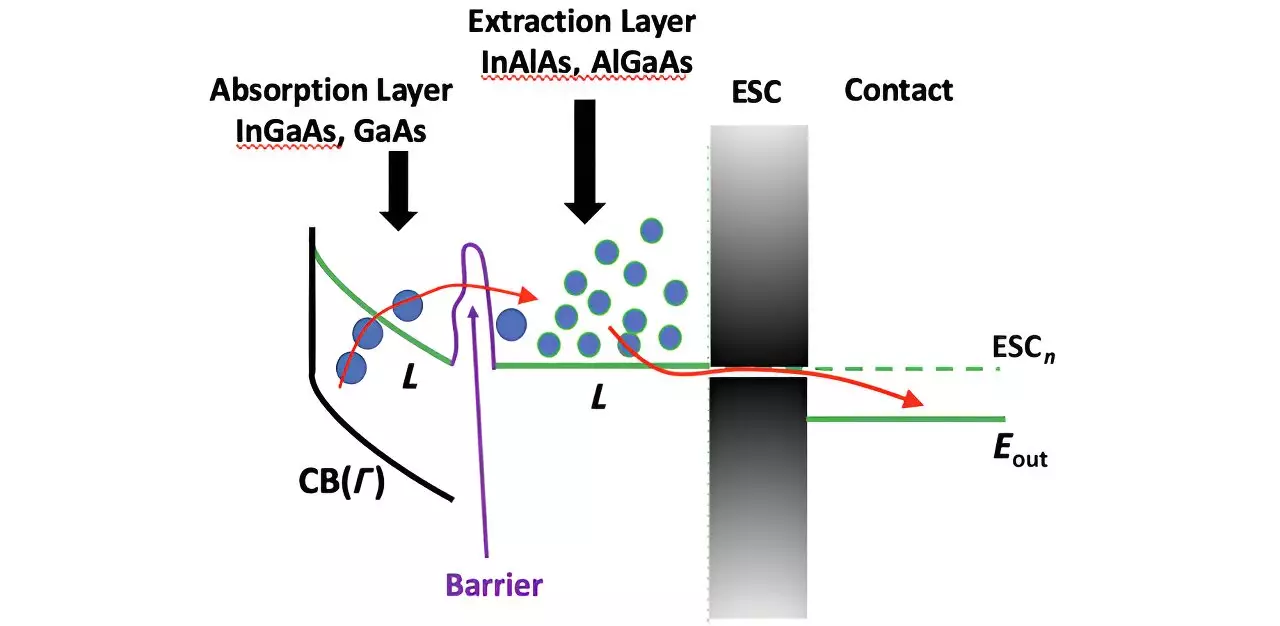Hot carrier solar cells represent an intriguing frontier in the quest for efficient solar energy conversion, challenging the established limitations of traditional photovoltaic technologies. The concept, conceived several decades ago, suggests these advanced cells could potentially exceed the maximum theoretical efficiency established by the Shockley-Queisser limit, commonly referenced in the discussion of single-junction solar cells. This article delves into the promise of hot carrier solar cells, along with the current hurdles in their realization and the recent scientific advancements aimed at overcoming these challenges.
At the heart of hot carrier solar cells is the ability to utilize high-energy electrons—hot carriers—that are generated by absorbing photons with energy exceeding the material’s bandgap. These carriers, if effectively extracted and utilized, can significantly enhance power conversion efficiency. The core innovation lies in managing the extraction of these hot electrons before they lose their valuable energy through thermalization. Traditional solar cells typically waste this crucial energy, capping the efficiency of energy conversion. Hot carrier cells promise to capture this energy, potentially leading to operations that surpass the previously thought limitations of photovoltaic efficiency.
Despite their theoretical advantages, the road to practical hot carrier solar cells is fraught with technical challenges. A primary issue is the rapid extraction of hot electrons across material interfaces, which can be complicated by the presence of parasitic barriers that impede efficient electron transfer. Recent experiments have revealed that these barriers exist at the heterostructure interface between the absorber and extraction layers, creating significant hurdles for electron migration.
Key to addressing these barriers is understanding the physics of electron transfer—the process is inherently tied to the alignment of energy bands between different materials. Any discrepancies can result in energy band misalignment, which can thwart the efficient movement of electrons. Particularly problematic is the existence of a parasitic barrier that halts the flow of hot electrons unless they can tunnel through this impediment. This tunneling process is influenced by the complex band structures of the materials involved, necessitating sophisticated analytical methods to unravel.
Recent studies, including one published in the Journal of Photonics for Energy, have harnessed the empirical pseudopotential method to examine these tunneling phenomena more closely. This innovative approach enables researchers to calculate energy bands in momentum space, aligning theoretical predictions with empirical findings tied to critical points in the materials’ structure. Such work is critical for deepening our understanding of the mechanisms at play during electron tunneling, particularly between carrier valley states and heterointerfaces.
The findings from this research shed light on the conditions that support efficient hot carrier extraction. Notably, the study highlighted the extraordinarily high tunneling coefficients within specific semiconductor configurations—namely indium-aluminum-arsenide (InAlAs) and indium-gallium-arsenide (InGaAs). These materials exhibit large tunneling coefficients, but the misalignment of energy bands and interface roughness can severely limit the transport of electrons, leading to disappointing efficiency in practical devices. This knowledge is vital, as it underscores the concerted need for precise interface engineering to achieve favorable electronic transfer rates.
Interestingly, the analysis revealed that certain semiconductor systems could mitigate these obstacles. Taking the combination of AlGaAs and gallium-arsenide (GaAs) as a case study, researchers found that the tailored composition and structural precision can enhance electron transfer significantly. Here, the aluminum content in the barrier allows for better energy band alignment, promoting tunneling coefficients as high as 0.88 in favorable conditions. This advancement points to the potential for developing solar cells that harness valley photovoltaics, making strides beyond the constraints of existing bandgap limitations.
In the context of high-electron mobility transistors composed of AlGaAs/GaAs, the capability for hot carriers to utilize energy gained during photonic interactions effectively opens avenues for valley photovoltaic applications. Real-space transfer, typically an impediment in transistor operation, becomes advantageous in hot carrier solar contexts, enhancing the feasibility for harnessing energy more effectively.
As the world grapples with the pressing need for sustainable energy solutions, the potential afforded by hot carrier solar cells embodies a beacon of hope. While challenges persist in their practical application, recent research advancements pave the way for overcoming these obstacles. By unlocking the behavior of electrons within carefully engineered material systems, the solar industry stands on the cusp of a new era—one where solar energy could be converted with unprecedented efficiency, leading to a brighter, more sustainable future. The continued exploration and refinement of hot carrier technology could ultimately prove crucial in the global transition to renewable energy.


Leave a Reply